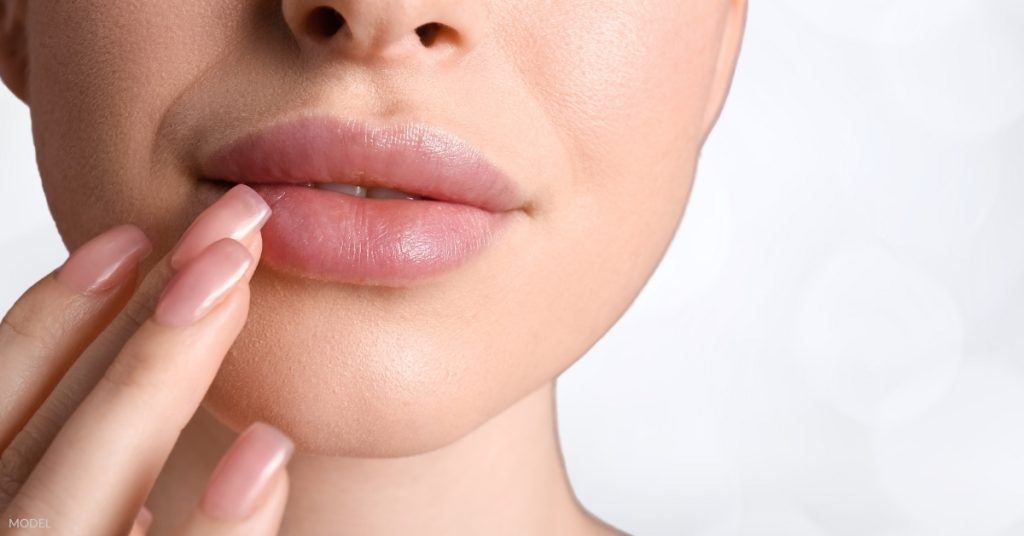You may have heard the DIY saying, “Measure twice, cut once.” Its corollary in the aesthetic treatment field may be, “It’s easier to add filler than to subtract it.” Injecting too much filler can result in “pillow face,” an unnaturally plump, doughy appearance.
How do you prevent this from happening, and what do you do if you’ve already gone overboard? We’ll discuss those issues in this post so you can enjoy the benefits of fillers without the pitfalls.
What Is Pillow Face From Filler?
We are all familiar with the image. The celebrity photo that goes viral, prompting speculation about what happened. Indeed, it can be disconcerting to see a once familiar, attractive face transformed into an unnaturally plumped–and sometimes unrecognizable–appearance. We assume a cosmetic treatment was involved, but what went wrong? What led to the odd overstuffed, puffed look?
“Pillow face” occurs when too much filler is injected into areas like the cheeks, nasolabial folds (the lines from your nose to the corners of your mouth), lips, and under-eye area. This repeated overfilling can result in a bloated, round appearance that looks far from natural.
Prevention Is Key
The most crucial step in preventing pillow face is selecting an experienced, certified injector with a track record of producing excellent results. Our board-certified dermatologists and certified nurse practitioners have the expertise to know which products are best suited for specific areas of the face and the needs of each patient. They understand facial anatomy and take a conservative approach to filler injections, producing consistently natural-looking results.
Reading patient reviews and looking at before-and-after photos are great steps to take when choosing an injector.
Having modest goals for your filler treatment results is another way to avoid a pillowy appearance. Remember, when it comes to fillers, less is often more. It’s easier to add more filler than it is to correct an overfilled face. Trusting your injector’s judgment will help avoid overfilling an area. A good rule of thumb is to wait at least 2 weeks after your initial treatment before deciding if you need more. This allows time for any swelling to subside and the filler to settle.
How To Fix ‘Pillow Face’
If you’ve already undergone filler treatments and your face looks extremely bloated and round after treatment, you may have had too much filler. This puffy look is characteristic of pillow face syndrome. Overfilling can also erase the natural contours of your face, leading to a flat or one-dimensional appearance.
Whether you have too much cheek filler, too much lip filler, or too much filler in other areas of the face, you have options.
Wait It Out
The results of some fillers last longer than others, although most last at least 6 months. If you’re not too self-conscious about your appearance, you can wait for the filler to dissolve naturally.
The time it takes for your body to break down the filler will depend on several factors, including the type of filler used, your metabolism, the area treated, and the amount injected. Areas with more facial movement, like the lips, tend to break down fillers faster than less active areas.
Dissolve Your Filler
The active ingredient in most fillers is a synthetic hyaluronic acid that mimics your body’s naturally produced hyaluronic acid. To accelerate the dissolution of your filler, you can have a provider inject hyaluronidase. Hyaluronidase is an enzyme that helps your body quickly break down the hyaluronic acid filler. While the hyaluronidase breaks the bonds immediately, it takes about 2 weeks for the effect to really become noticeable.
Hyaluronidase injections are effective, but they’re not perfect, so it’s best not to overdo injectables in the first place. Skin doesn’t necessarily look the same after dissolving fillers this way; your skin may look crepey or loose.
However, if the overfilling is moderate, or if you have gotten filler for only a few years, you should be able to rebound after treatment with hyaluronidase and see your skin return to its original state or close to it.
How Long After Dissolving Filler Can You Get More?
It depends on the treatment area. If you dissolve lip fillers, you should wait at least 2 weeks before scheduling another treatment. The wait is typically longer for areas such as the cheeks.
Plan Your Treatments Wisely
Our injectors can create a treatment plan so you won’t get filler treatments too frequently, which can lead to a buildup of filler and an overfilled appearance. They work with you to create a plan that optimally times your touch-ups to maintain results without overloading any area.
When used correctly, dermal fillers can be an excellent facial contouring and rejuvenation tool. The key is moderation and working with a skilled provider who understands the nuances of facial anatomy and aging. Use the online form to request a consultation with one of the injectors at Dermatology Associates of Rochester or call us at (585) 272-0700.







Leave a Reply